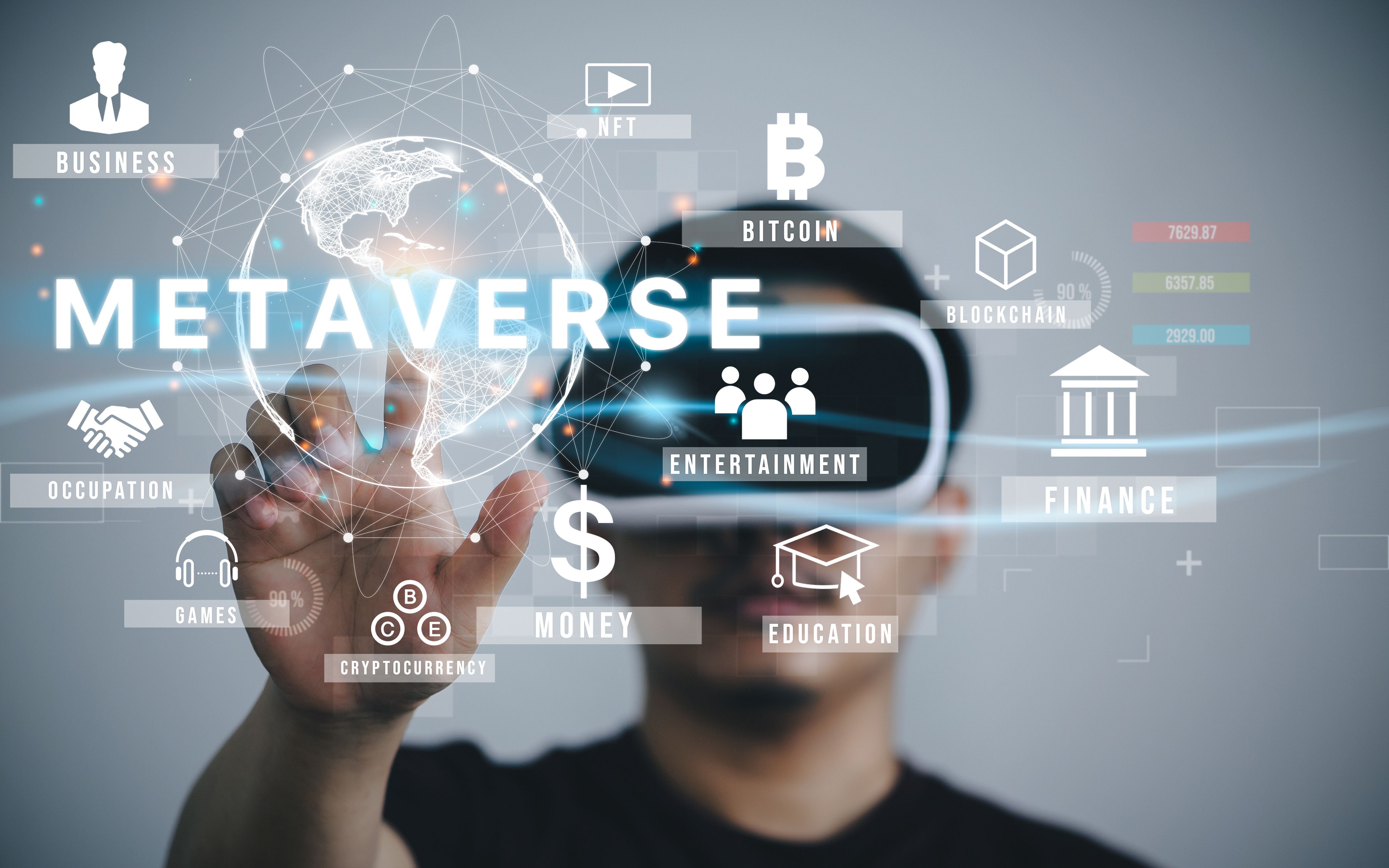The term 'metaverse' has been trending lately, particularly within the gaming, virtual reality, and tech industries. With the increasing advancement of technology and the rapid evolution of the virtual world space, the idea of a 'metaverse' has gone beyond being just a concept of science fiction and is now becoming a possible reality. But what exactly is a metaverse? Where did the term come from? In this blog post, we will explore the history and evolution of the term 'metaverse,' from its sci-fi roots to its potential impact on our digital future.
The Origins of the 'Metaverse'
The metaverse has recently become a hot topic in technology and entertainment but has been around for decades. For instance, science fiction writer Neal Stephenson mentioned the term "Metaverse" in his 1992 novel Snow Crash. The book depicts the metaverse as a completely immersive virtual reality that individuals could enter by using an advanced headset and interface.
The term, as we already know, it's a combination of the prefix "meta," which in Greek means "beyond" or "transcending," and "universe." Therefore, it refers to a virtual universe that people can enter and experience as if it were real.
However, before Stephenson's Snow Crash, the metaverse appeared in other science fiction works. For instance, in William Gibson's Neuromancer (1984), the protagonist navigates a virtual reality called the "Matrix" (yes, the same book that inspired the movie).
Additionally, Vernor Vinge, a mathematics and computer science professor, speculated about the emergence of a global brain in his 1981 novella "True Names," which laid out the basic idea of entering a virtual world using a portal.
The truth is, before Stephenson's novel popularized the term and introduced it to mainstream audiences, other experts and writers elaborated on the idea of an immersive virtual world that could be accessed through technology. And since the nineties, the concept of the metaverse has been evolving significantly.
The Metaverse: Early Developments and Concepts
In the early days of virtual reality and online gaming, developers and enthusiasts began to explore the potential of a fully realized metaverse.
During the transition from the 1970s to the 1980s, MUDs (Multi-User Dungeons) emerged as an important development. These were text-based virtual worlds where players could interact with each other, complete quests, and explore various environments.
Another of the earliest examples of a metaverse-like concept was a game called Habitat. Developed in the mid-1980s, Habitat was a virtual world where players (represented by on-screen avatars) could interact with each other and the environment. Players could chat, trade virtual goods, and even attend virtual concerts.
Technological limitations hampered, to some extent, the earliest attempts at building a fully realized metaverse, but developers continued to push the boundaries of what was possible. In the late 1990s, a project called Active Worlds created a 3D virtual world that users could explore and customize.
The Metaverse Rebirth: Second Life
One of the most well-known examples of a fully-realized metaverse is Second Life. Launched in 2003, Second Life quickly gained popularity as a virtual platform where users could create their own avatars, interact with others, and explore a vast virtual world.
Second Life was the brainchild of Linden Lab, a company founded by Philip Rosedale in San Francisco in 1999. The platform's development was driven by a desire to create a fully-realized 3D virtual world where users could interact with each other in real time.
In Second Life, users create avatars that are able to interact with other users in a completely virtual environment. The platform allows for a wide range of activities, from socializing with others to attending virtual concerts or even starting a virtual business.
Its emphasis on user-generated content sets Second Life apart from other virtual worlds. For instance, users can craft virtual belongings, from houses and clothes to landscapes.
Because of this versatility, Second Life was also utilized by several major companies as a marketing tool, with brands like Toyota and Coca-Cola creating their own virtual presence within the platform.
While Second Life's popularity has waned in recent years, it remains a significant piece of virtual world history. The platform paved the way for future metaverse developments and demonstrated the potential of fully-realized virtual environments.
The Rise of the Modern Metaverse
Virtual platforms are becoming increasingly significant in our daily lives, providing new ways to connect, socialize, and do business. However, the potential of these platforms reaches far beyond what we've seen so far.
The metaverse aims to create fully realized virtual worlds, offering a level of digital engagement that's hard to imagine today. Developers worldwide are working to create the metaverse, and recent innovations in virtual platforms and blockchain technology have brought us closer than ever before.
Here, we'll explore the current developments of the metaverse, including virtual platforms and technologies involved, such as Web 3.0 and blockchain technology.
Building the Metaverse: Tech Innovations and Efforts
Notable companies have been working on building the metaverse. For example, Meta began to lead the pack. Its Horizon Workrooms, an Oculus platform, merges VR conferencing with collaborative productivity tools.
Decentraland is another noteworthy project that aims to establish a metaverse. Built on blockchain technology, the platform allows users to create and monetize virtual content while enjoying complete control over their creations.
Other ventures, like Somnium Space, attempt to provide an immersive virtual environment where users can buy, sell, and trade virtual assets, including virtual real estate, collectibles, and digital art.
Web 3.0 and Blockchain: Revolutionizing Today's Metaverse
The potential role of Web 3.0 and blockchain technologies in building the metaverse is vast. On the one hand, Web 3.0, a technology that comprehends the internet's evolution, is essential for today's metaverse due to its decentralization, interoperability, and user empowerment capabilities.
On the other hand, blockchain provides a decentralized infrastructure for virtual economies, allowing users to engage in transactions without the need for an intermediary. The use of blockchain technology guarantees transparency and security in all transactions, which is difficult to achieve with traditional payment systems.
Blockchain's role is crucial in the development of the metaverse alongside other immersive technologies like VR and AR. These days, users can take advantage of virtual, augmented, and extended reality to create realistic experiences in the metaverse that are both interactive and engaging.
Conclusion: The Metaverse Today and Tomorrow
The metaverse has the potential to transform every aspect of our lives. We've looked at its history, current state, and how Web 3.0, blockchain, virtual reality, and other technologies play a crucial role in its development.
The metaverse represents a tantalizing prospect for many. On top of that, its potential to revolutionize how we work, interact, and play is immense, creating new opportunities for entrepreneurs, artists, gamers, and anyone else who wants to engage with the virtual world on a deeper level.
At Vection Technologies, we're excited to be part of this transformational industry. Our flagship product, 3DFrame, empowers creators to build immersive, interactive environments that transcend the limits of traditional platforms.
Contact us today to find out more about how we're building the future of digital engagement, one virtual world at a time.


